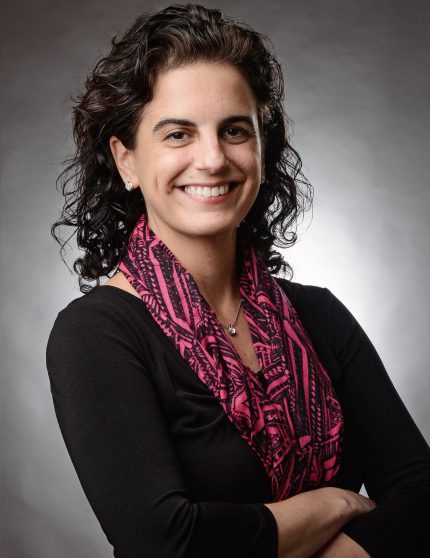Fifth House Ensemble closes season with Garrop premiere, Crumb classic

Among the plethora of new-music ensembles in Chicago, some like to stay in a personal safety zone, performing works by a handful of composer friends and largely neglecting important forward-looking modernists of the past.
Not so Fifth House Ensemble. In their final concert of the season Saturday night at Fourth Presbyterian Church, the collective offered an enterprising, well-balanced program with a world premiere by a leading local composer and a pair of works by 20th-century masters.
The concept tying all six works together–some rather tenuously–was time in its various manifestations. The printed program says the concert was curated to feature works “that challenge our perceptions and make us think about the remarkably diverse ways that humans share the experience of time.” So far so good.
But there were issues with the self-consciously artsy presentation. In between the musical works, a contemporary poem by Anonymous was read that depicted a train journey and various transient passengers’ dilemmas, semi-enacted by Fifth House members and set off by train sounds and blinking lights.
More problematic was the decision to perform all six works continuously without a break. Even with the poem reading as connective tissue, it wasn’t always clear when one work ended and the next began. (Listing the scoring for each piece would have helped.) The sequencing was made more confusing still by presenting a partial version of George Crumbs’s Vox Balaenae at the start (minus cello for some reason) as listed in the program, and then performing the complete Crumb work at the end (not listed). No wonder some audience members appeared to be checking their programs in bafflement.
Even with that issue and the dubious poetic linking, Fifth House Ensemble delivered supremely vital and polished performances that provided the best possible advocacy for all six works.
The centerpiece and main event was the world premiere of Stacy Garrop’s And All Time. Her work is cast in four sections with each inspired sequentially by poems of Poe (“The Bells”) Henry van Dyke (Time Is”), John Milton (“On Time”) and Walt Whitman (“Poem of Joys”). The musicians’ prerecorded readings of lines from each poem were interstiched between the music.
Written for Fifth House’s Ensemble full complement of ten musicians, And All Time begins with the musicians individually muttering “Time Is,” the multi-voiced chant growing louder until the music leaps in. The first section (“delight”) is aptly bold and optimistic with Straussian horn writing (well played by Parker Nelson) highlighting Garrop’s nearly symphonic textures.
The second section is melodic and lovely, wrought in a melancholy Copland-esque nostalgia with expressive lines for horn and woodwinds. The music gradually accelerates and goes directly into the more agitated third section with the musicians shouting “Fly envious Time” (from Milton) amid more dynamic and turbulent music.
The final section is equally muscular, with a majestic, striding main theme and fizzing energy, which eventually quietens down, ending on a note of peaceful elevation.
The interpolated poem readings feels like a dated device, not adding much to the music. But Garrop’s score is otherwise highly inspired. This is confident, big-boned music, scored with flair and wholly delightful. And All Time seems like a short symphony in waiting, and would likely benefit from a full-orchestral version.
The rest of the program proved equally diverting.
Alfred Schnittke’s bleak, coffin-nail music can make Shostakovich seem like Leroy Anderson. Such is the case with his Piano Quartet in A minor. In this concise work Schnittke deconstructs the main theme of Mahler’s uncompleted student Piano Quartet, layering multiple fragments of the melody on top of each other with increasing volume and dissonance until the breaking point. The strings’ matter-of-fact reprise of the theme near the coda failed to provide the requisite tug, though Katherine Petersen unleashed playing of massive force in the daunting keyboard part.
Petersen was also featured in Caleb Burhans’ In Time of Desperation, where her insistent playing of an ostinato-like motif was put across with powerful accelerating impact.
In LJ White’s moody Groove III for quintet, a yearning theme is reworked in various guises ultimately not avoiding repetitiveness. More rewarding was Nicolas Scherzinger’s Fractured Mirrors (also for quintet) with its jumpy, mercurial phrases traveling through an array of colors and building up a considerable head of steam at the coda.
Despite the bifurcated presentation, Crumb’s Vox Balaenae (Voice of the Whale) proved a highlight of the evening, along with the Garrop premiere. Crumb’s 1971 paean to the title cetacean remains one of his most popular and characteristic works, showing the American composer’s singular ear for colors and unorthodox use of instruments (scored for flute, cello and prepared piano).
Flutist Melissa Snoza, cellist Herine Coetzee Koschak, and pianist Petersen did the Full Crumb in this performance, wearing black half-masks as directed in the score, with the playing area bathed in an evocative blue light.
From Petersen’s scraping of the piano strings, to Snoza singing into her flute while playing, and Koschak doubling on small antique cymbals, the Fifth House members delivered a committed and atmospheric performance, bringing out the haunting sonic landscape, unearthly beauty and musical imagination of Crumb’s score.
Posted in Performances




